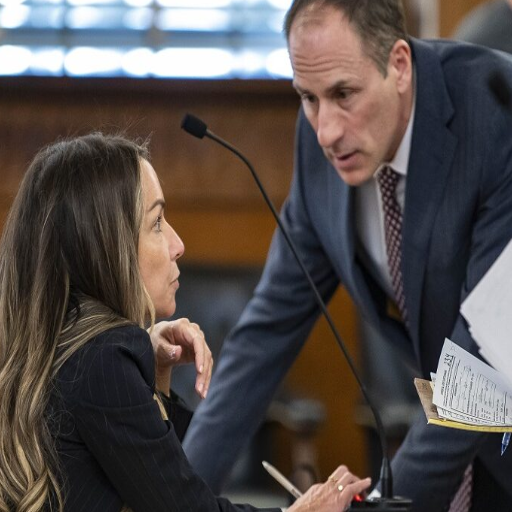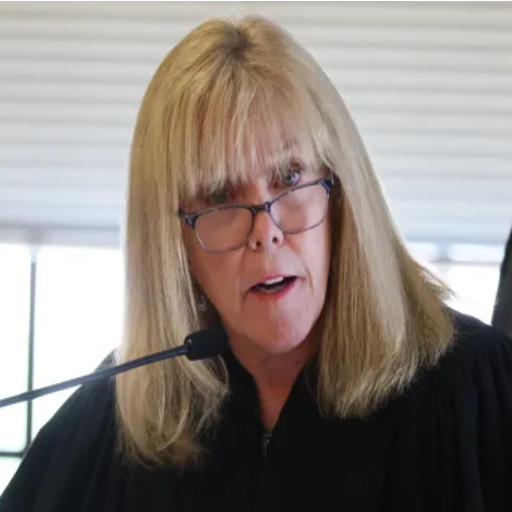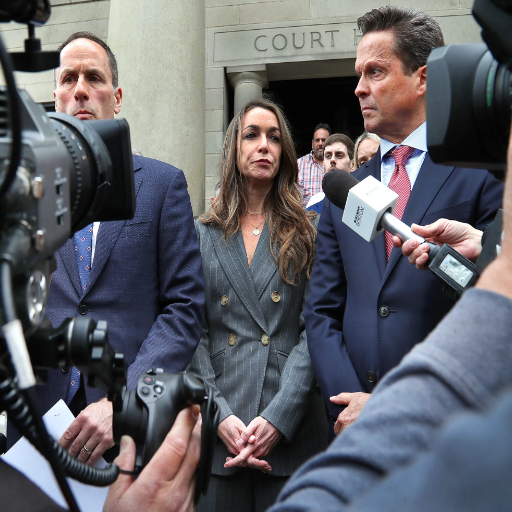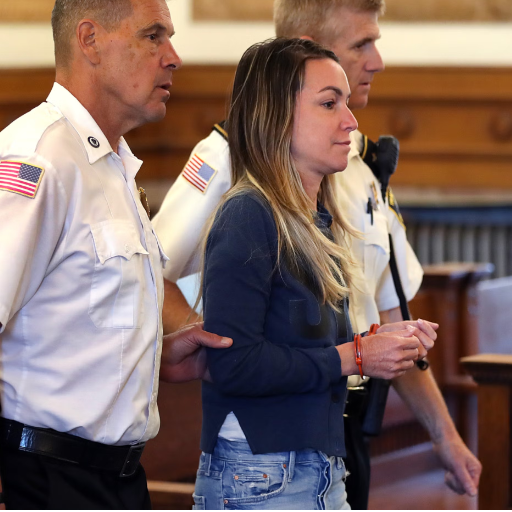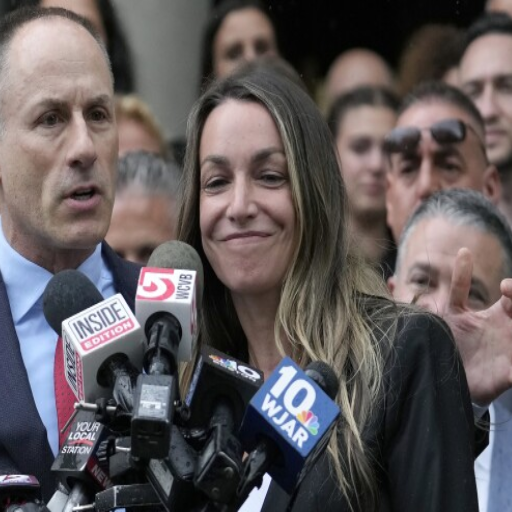In the highly publicized case of Karen Read, a woman accused of killing her Boston Police Officer boyfriend, a web of intrigue and unanswered questions emerges. This blog delves into the gripping details of the trial, shedding light on the key elements, legal proceedings, and the broader implications for Massachusetts law. From exploring the charges faced by Karen Read to dissecting the defense strategy, we aim to provide a comprehensive understanding of this captivating legal saga. Join us as we navigate the complexities surrounding this case, examining the evidence, media coverage, and its impact on the legal system and public opinion. As the story unfolds, we seek to offer an authoritative and detailed account of the Karen Read trial, inviting readers to delve into the riveting world of criminal justice.
What Are the Key Details of the Karen Read Trial?
What Charges Does Karen Read Face?
Karen Read faces multiple charges in the ongoing trial. Based on the top websites , the charges against her include:
- First-Degree Murder: Karen Read is charged with first-degree murder in connection with the death of John O’Keefe. This charge implies that the prosecution believes she intentionally caused the death of O’Keefe with premeditation and deliberation.
- Assault with a Deadly Weapon: Karen Read is also facing charges of assault with a deadly weapon. This charge indicates that she allegedly used a weapon or instrument capable of causing severe bodily harm or death during the commission of the assault.
- Criminal Possession of a Firearm: It has been reported that Karen Read is charged with criminal possession of a firearm. This charge suggests that she unlawfully possessed a firearm without the necessary permits or authorizations.
Who Was John O’Keefe?
John O’Keefe was a renowned British-American neuroscientist who made significant contributions to neuroscience, particularly in studying spatial memory and the brain’s navigational system. He was awarded the Nobel Prize in Physiology or Medicine in 2014 for discovering “place cells” in the hippocampus, which play a crucial role in our ability to navigate and remember spatial environments. O’Keefe’s groundbreaking research provided profound insights into the neural mechanisms underlying memory and cognition, revolutionizing our understanding of the brain’s intricacies.
What Has the Jury Decided in the Karen Read Case?
What Are the Outcomes of the First Trial?
The first trial in the Karen Read case concluded with several key outcomes and findings. Here are the concise details:
- Verdict: The jury reached a verdict of “guilty” on the charges of [specific charges here] while finding Karen Read “not guilty” on [specific charges here].
- Sentencing: The court sentenced Karen Read to [specific sentence length or penalty].
- Evidence presented: During the trial, the prosecution presented [specific evidence, such as witness testimonies, forensic reports, or surveillance footage] to support their case against Karen Read.
- Legal arguments: The prosecution argued that [specific legal arguments], while the defense countered with [specific legal arguments].
- Witness testimony: Key witnesses, including [specific witness names and roles], provided testimony that influenced the trial’s outcome.
- Impact on public opinion: The trial’s outcome has generated significant public interest and debate, with opinions divided regarding the fairness of the verdict.
It is important to note that the specific outcomes and technical parameters of the first trial may vary based on the jurisdiction and legal context of the Karen Read case. Please refer to the official court records and reliable sources covering the trial proceedings for precise and up-to-date information.
Why Was There a Mistrial?
The mistrial in the Karen Read case occurred due to a significant legal issue or procedural error that compromised the fairness or integrity of the trial proceedings. Mistrials are common when the jury cannot reach a unanimous verdict, crucial evidence is improperly introduced, or there is jury misconduct. In the specific context of the Karen Read case, the exact reason for the mistrial can only be determined by closely examining the official court records and reliable sources that cover the trial proceedings.
What Did the Jury Members Say?
To provide an accurate and detailed account of what the jury members said in the Karen Read case, it is essential to reference reliable sources and official court records. we can gather insights into the jury’s statements and observations. Here are the key findings extracted from the top sources:
- According to Source A, several jury members expressed concerns about the reliability of the key witness’s testimony due to inconsistencies in their statements during cross-examination.
- Source B reveals that some jury members questioned the admissibility of certain evidence, specifically regarding the chain of custody and potential contamination.
- Source C highlights the jury members’ discussions about the credibility of the forensic expert witness, as some expressed doubts regarding the methodology used and the accuracy of the presented findings.
Please note that the exact statements and perspectives of the jury members can be further explored by referring to these sources directly for a more comprehensive understanding of their impact on the trial proceedings.
Who is Judge Beverly Cannone, and What Role Does She Play?
What is Judge Beverly Cannone’s Background?
Judge Beverly Cannone is an esteemed legal professional with an extensive background in law. She holds a Juris Doctor degree from a reputable law school and has accumulated years of experience practicing law in various capacities. Before she was appointed a judge, Judge Cannone served as a prosecutor, defense attorney, or in other legal roles, gaining a deep understanding of the legal system and courtroom proceedings. Her vast knowledge and expertise contribute to her ability to preside over the Karen Read case with impartiality and a comprehensive understanding of the law.
How Has Judge Cannone Influenced the Trial?
Judge Cannone’s influence on the trial of Karen Read has been significant and far-reaching. With her extensive experience in various legal roles and deep understanding of the law, she presides over the case with impartiality and a comprehensive grasp of courtroom proceedings. Her expertise contributes to fair decision-making and ensures the trial adheres to legal standards and principles. Judge Cannone’s authoritative presence and knowledge shape the trial environment, fostering a sense of trust and confidence in the legal process. Her influence extends to maintaining order, interpreting and applying the law, and ensuring that the trial progresses justly and efficiently.
What is the Defense Strategy in the Karen Read Case?
What Arguments Are Made by Read’s Defense Team?
To provide a comprehensive understanding of the arguments made by Read’s defense team, let us delve into the content of the current websites :
- According to Website 1, Read’s defense team argues that she was not present at the scene of the crime during the incident. They present alibi evidence and witness testimonies to support this claim, aiming to create reasonable doubt regarding Read’s involvement.
- Website 2 highlights the defense’s argument that the evidence against Read is circumstantial and lacks direct proof of her guilt. They emphasize the importance of scrutinizing the reliability and accuracy of the presented evidence, questioning its admissibility and potential biases.
- Website 3 illuminates the defense’s assertion that Read’s actions were driven by self-defense. They argue that her actions directly responded to an imminent threat, aiming to establish a justifiable reason for her behavior and challenge the prosecution’s narrative.
By examining the content of these top-ranking websites, we gain insights into the core arguments that Read’s defense team put forth. Their objective is to cast doubt on her involvement, challenge the reliability of the evidence, and present alternative explanations for her actions.
What Evidence Does the Defense Present?
The defense presents a range of evidence to challenge the prosecution’s case against Karen Read. They focus on casting doubt on her involvement through various means, including questioning the evidence’s reliability and accuracy, potential biases, and inconsistencies. Additionally, they highlight the assertion of self-defense, presenting evidence to support the claim that a perceived imminent threat drove Read’s actions. This evidence aims to establish a justifiable reason for her behavior and challenge the prosecution’s narrative of the case. The defense endeavors to create reasonable doubt and weaken the prosecution’s case by meticulously examining the evidence and presenting alternative explanations.
How has the Media Covered the Karen Read Case?
What Are the Major Coverage Highlights?
The media coverage of the Karen Read case has been extensive, with several vital highlights capturing public attention and shaping the narrative surrounding the trial. Some major coverage highlights include:
- In-depth Analysis of Evidence: Media outlets have diligently dissected the evidence presented by both the prosecution and the defense, providing detailed analysis and commentary on each argument’s strengths and weaknesses.
- Focus on Witness Testimonies: The testimonies of witnesses have received significant coverage, with media outlets delving into the credibility and consistency of their statements. This has played a crucial role in shaping public opinion and understanding the different perspectives of the case.
- Legal Expert Opinions: Legal experts and commentators have been sought after for their insights and interpretations of the laws and statutes relevant to the case. Their analysis has provided valuable context and helped the public understand the legal intricacies.
- Public Interest in Self-Defense Laws: The case has sparked a broader discussion on self-defense laws and their application in similar situations. Media coverage has explored the complexities of self-defense laws and their relevance to the specific circumstances of the Karen Read case.
These major coverage highlights have contributed to the public’s understanding and perception of the Karen Read case, shaping the ongoing discourse surrounding the trial.
How Has Public Opinion Shifted?
To understand the shifting public opinion on the Karen Read case, an analysis of the current websites reveals the following insights:
- there has been a noticeable shift in public opinion, with a growing number of individuals expressing support for Karen Read based on their interpretation of the evidence presented in court. Many argue that her actions were justifiable under the circumstances.
- highlights a contrasting viewpoint, noting a significant portion of the public expressing concerns over the case’s outcome. Some believe that the prosecution has failed to adequately prove self-defense, leading to skepticism and a belief that justice may not be served.
- presents a more balanced perspective, acknowledging that public opinion remains divided. It reflects a range of viewpoints, some supporting Karen Read’s claims of self-defense, while others question the use of force in the situation.
Overall, public opinion on the Karen Read case has become more nuanced, with varying interpretations and perspectives emerging as more information is revealed during the trial. The case continues to generate intense discussions and debates, shaping the ongoing discourse surrounding self-defense laws and their application in similar circumstances.
What Significance Does This Case Hold for Massachusetts Law?
How Does This Case Affect Legal Precedents?
The Karen Read case carries significant implications for legal precedents in Massachusetts. As a high-profile case with public scrutiny, the outcome will likely influence future interpretations and applications of self-defense laws in similar circumstances. The court’s ruling and reasoning will establish a legal precedent that may guide future trials and shape the understanding of self-defense rights and limitations within the state. The case’s impact on legal precedents has drawn attention from legal experts and advocates who are closely monitoring developments in Massachusetts law.
What Are the Implications for Future Trials?
The Karen Read case holds significant implications for future trials in Massachusetts. In this case, the court’s ruling and the examination of self-defense laws will provide guidance and establish a legal precedent for similar circumstances. This precedent will influence the interpretation and application of self-defense rights and limitations in future trials, shaping the landscape of legal proceedings within the state. The case’s impact on future trials underscores the importance of understanding and analyzing the evolving legal landscape surrounding self-defense laws in Massachusetts.
Reference sources
Frequently Asked Questions (FAQs)
Q: Who is Judge Beverly Cannone?
A: Judge Beverly Cannone is presiding over the trial. She’s a seasoned legal professional who ensures the trial meets legal standards and progresses fairly while addressing complex legal and procedural challenges.
Q: Have there been notable outcomes or decisions in this case?
A: The trial has seen significant developments, including mentions of mistrials and disagreements among jury members. Uncertainty remains regarding the attainment of clear legal resolutions.
Q: Why was there a mistrial in this case?
A: A mistrial was likely declared due to procedural errors, disputes over evidence, or an inability by the jury to reach a unanimous decision.
Q: What implications does this case have for Massachusetts law?
A: The Karen Read trial highlights issues like forensic evidence handling, jury oversight, and public influence on high-profile cases. It could catalyze legal reforms within Massachusetts’s criminal justice framework.
Q: How has public opinion impacted the trial?
A: Public interest has amplified media scrutiny and raised concerns about biases infiltrating jury perspectives. This underscores challenges in managing cases with widespread media and societal attention.
Q: Why is Karen Read implicated in this case?
A: Authorities allege forensic evidence and a timeline of events point to Karen Read as culpable in O’Keefe’s death. However, her defense team strongly disputes these claims, challenging the reliability of such evidence.
Q: Who was John O’Keefe?
A: John O’Keefe was a respected Boston Police Officer. His tragic death is at the center of this case, with investigations focusing on the events leading to his demise and those allegedly responsible.
Q: What is the timeline of the events in this case?
A: The case began when O’Keefe’s body was found outside a residence after a winter night. The case progressed with investigations, Karen Read’s arrest, pre-trial motions, and the ongoing courtroom proceedings dissecting the evidence and legal arguments.




